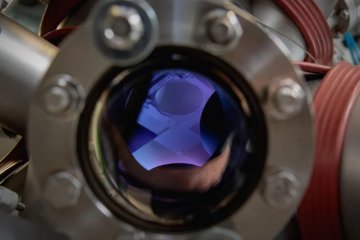All genres
361.
Poster
Experimental Determination of the Ternary Fe–Al–Zr Phase Diagram. Discussion Meeting on the Development of Innovative Iron Aluminium Alloys, Düsseldorf, Germany (2004)
362.
Poster
Manufacturing and Testing of a Novel Advanced NiAl-Base Alloy for Gas Turbine Applications. Materials for Advanced Power Engineering 2002 (Proc. 7th Liège Conference), Liege (2002)
363.
Poster
Experimental Study of the Liquidus Surface of the Al–Fe–Ti System. Thermodynamics of Alloys - TOFA 2002, Univerità degli Studi di Roma “La Sapienza”, Rome, Italy (2002)
364.
Poster
Nouvelle évaluation de la surface de liquidus du système ternaire Ti–Al–Fe. CPR “Intermetalliques base titane”, Seminar “Alliages TiAl”, Aspet, Haute-Garonne, France (2002)
365.
Poster
New results on intermetallic phases, phase equilibria, and phase transformation temperatures in the Fe–Zr system. Materials Week 2000, München, Germany (2000)
366.
Poster
Constitution, Microstructure and Mechanical Properties of Ternary Fe–Al–Mo Alloys. EUROMAT 99, Munich, Germany (1999)
367.
Poster
Phase Equilibria in the Al-rich part of the Al–Ti system. 2nd International Symposium on Gamma Titanium Aluminides, TMS Annual Meeting, San Diego, CA, USA (1999)
368.
Poster
Intermetallische NiAl-Komponenten für Systeme zur umweltfreundlichen Energiewandlung. Materialica 1998, Munich, Germany (1998)
369.
Poster
Konstitutionsuntersuchungen im System Fe–Al–Zr. Werkstoffwoche '98, Munich, Germany (1998)
370.
Poster
Structure and Mechanical Properties of Ti–Al–Fe Alloys at Ambient and High Temperatures. Structural Intermetallics 1997, Seven Springs, PA, USA (1997)
371.
Poster
Reinvestigation of Phase Equilibria in the Ti-rich Part of the Ti–Al System. Journées d´Automne 1996, Paris, France (1996)
372.
Poster
The Fe–Al–Ti System. Journées d´Automne 1996, Paris, France (1996)
373.
Poster
Experimentelle Untersuchungen der Hochtemperaturgleichgewichte im System Ti–Al. DGM Hauptversammlung 1993, Friedrichshafen, Germany (1993)
374.
Poster
Experimental Determination of the Phase Equilibria in the Fe–Al–C System. CALPHAD XIX, Noordwijkerhout, The Netherlands (1990)
375.
Teaching
Eisenaluminide. Lecture: DGM Fortbildung Einführung in metallische Hochtemperaturwerkstoffe (Webinar), IFAM, Dresden, Germany, May 12, 2020 - May 14, 2020
376.
Teaching
Phase Equilibria and Phase Diagrams. Lecture: 4th MSIT Winter School on Materials Chemistry, Castle Ringberg, Tegernsee, February 16, 2020 - February 20, 2020
377.
Teaching
Eisenaluminide. Lecture: DGM Fortbildungstagung Hochtemperaturwerkstoffe, IFAM, Dresden, Germany, May 15, 2018 - May 17, 2018
378.
Teaching
Phase diagrams and phase transformations. Lecture: Education Seminar 5th International Workshop on Titanium Aluminides, Tokyo, Japan, August 28, 2016
379.
Journal
Ternary Fe–Al–X Systems.
380.
Other
Co-organizer of the 1st MSIT Advanced School on Diffusion in Materials - Fundamentals and Applications. (2022)











